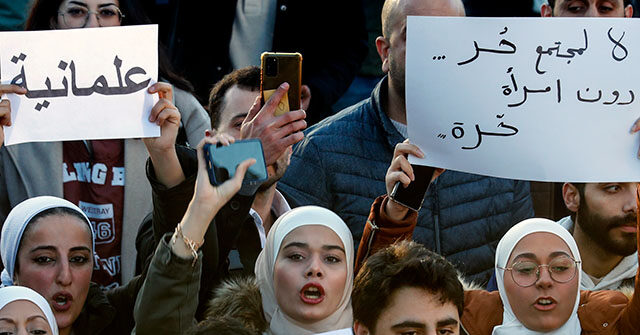On Thursday, a significant protest erupted in Damascus, Syria, as hundreds of individuals gathered to demand that the regime that has replaced the ousted dictator Bashar Assad respects women’s rights and civil freedoms. Assad’s regime crumbled when Hayat Tahrir al-Sham (HTS), a Sunni jihadist organization, surrounded the capital between December 7 and 8. The Syrian civil war, which has persisted since 2011, erupted following Assad’s brutal crackdown on demonstrations advocating for expanded human rights, leading to a multitude of militias emerging to challenge his rule. This conflict intensified with the rise of various militant factions, including the Islamic State, which sought to establish a caliphate in regions such as Raqqa.
In the wake of Assad’s departure, HTS leader Ahmed al-Sharaa, formerly known as Abu Mohammed al-Jolani, attempted to gain global confidence by presenting a moderate image. He has changed his public persona significantly, wearing Western-style attire and proposing the formation of an inclusive government that would acknowledge the rights of Syria’s diverse ethnic and religious minorities, including Christians and Kurds. However, despite making promises to uphold women’s rights and avoid persecution of minorities, Sharaa has also openly supported aspects of Islamist governance, dismissing critics as “ignorant”. The protest was sparked not solely by Sharaa’s position but by disparaging remarks made by Obaida Arnaout, HTS’s official spokesman, who claimed women lacked the biological capability for many high-ranking government positions.
Protestors in Damascus assembled in Ummayad Square, a site that had witnessed recent celebratory gatherings following Assad’s ousting. The diverse group included women wearing hijabs and those not, unified in chants like “the Syrian people are one.” They displayed signs advocating for a secular state and gender equality, articulating their aspiration for freedom post-Assad. One protestor, Ayham Hamsho, emphasized the importance of continuing the fight for a secular and democratic state, recalling the essential role women have played in supporting the economy amidst years of turmoil. The protests illustrated a collective yearning for a progressive political landscape that respects civil liberties and recognizes the contributions of all citizens.
The immediate triggers for the protest were Arnaout’s remarks on Lebanese media, where he suggested HTS’s intent to limit women’s involvement in defense and judicial roles. His statements pointed to a belief, based on alleged biological differences, that women were unsuitable for high-ranking positions in government, sowing fear about the future of women’s rights under the new regime. Despite his claims that women could pursue education, he left ambiguous the possibility of their participation in law and governance. His television appearance seemed to be a defensive measure aimed at alleviating public anxieties about the potential oppression under HTS rule.
As the protest gained momentum, it became evident that the promises made by Sharaa to establish an inclusive and representative government were doubted by many. Reports indicated that the appointments to key government positions were primarily from HTS or groups ideologically aligned with it, such as Ahrar al-Sham and the Syrian Muslim Brotherhood. This trend raises concerns about a possible return to a regime marked by corruption and nepotism, mirroring the previous regime’s faults rather than leading to genuine reform. Additionally, the shifts in the judiciary system, which replaced the infamous but functional courts of the Assad era, left many locals feeling uneasy as they were encouraged to resolve grievances through “preachers” rather than an established legal system.
While Sharaa has sought to project a narrative of unity and inclusion, particularly in interviews with Western media, skepticism remains prevalent. He claimed that his government would encompass all segments of society, promising open dialogue and representation. In response to comparisons with the Taliban’s rigid governance, he downplayed the cultural and societal parallels, asserting that Syrians’ historical coexistence would prevent such an extreme imposition of authority. Sharaa has also stated that HTS respects women’s educational rights but remains vague regarding other civil liberties, hinting at unspoken “legal issues” that might restrict freedoms in areas such as alcohol consumption.
The situation in Syria is precarious, with the recent protests highlighting a deep-rooted desire for civil rights in the wake of authoritarian rule. As the nation transitions from the Assad era to an uncertain future under HTS, the actions and policies of the new regime will be closely scrutinized. The protests underscore a critical juncture in Syria’s history, where the population seeks to secure the freedoms they fought for amidst a long and brutal conflict, and raises significant concerns over the role of women and minority groups in the evolving political landscape.

